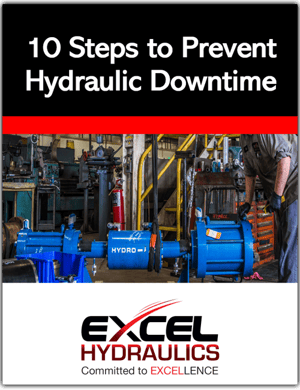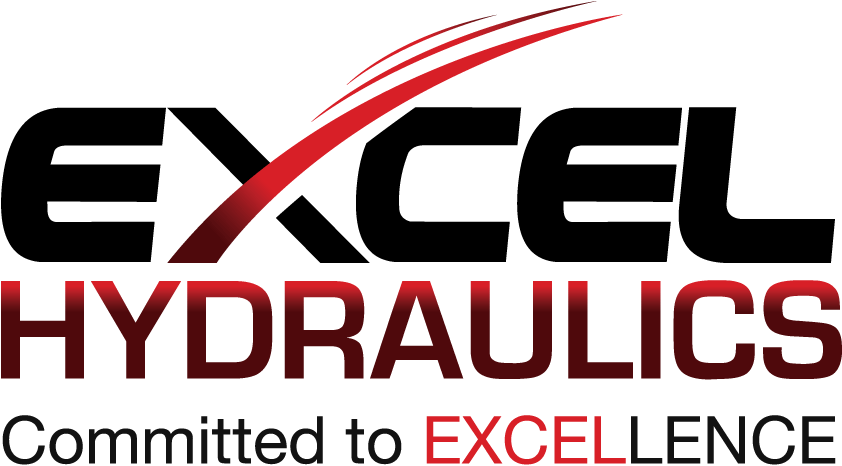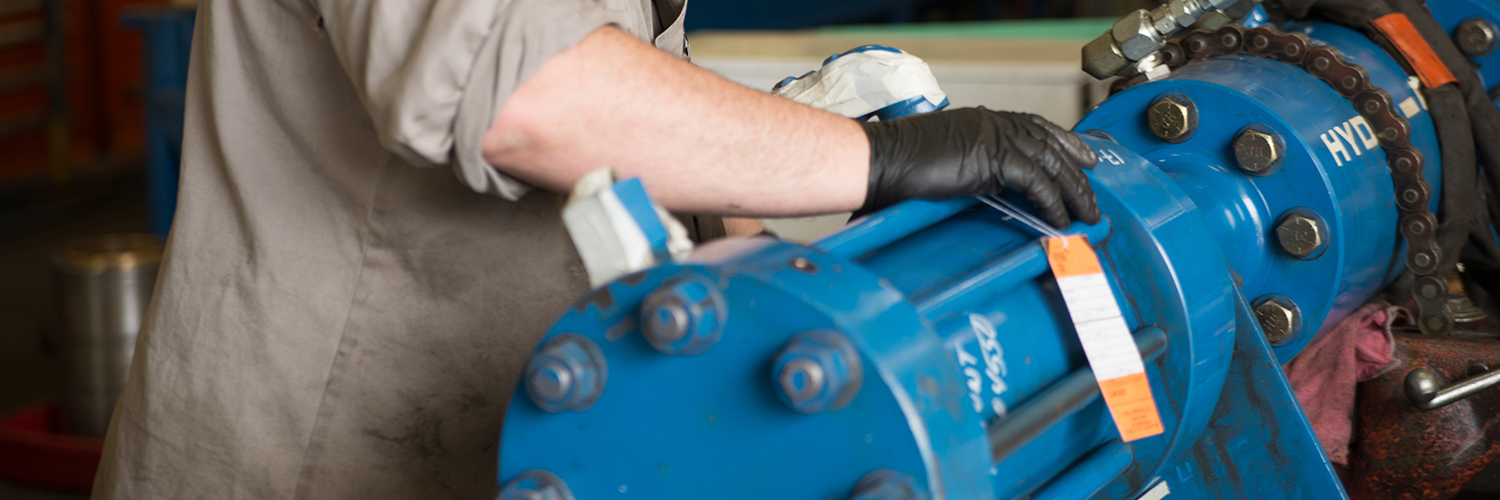Tired of experiencing costly downtime when your hydraulic equipment fails? Can you afford to lose $100,000.00 or more if your hydraulic equipment fails and production grinds to a halt? It has been our experience that being a little proactive can save you thousands of dollars and a lot of headaches!
Did you know, 98% of organizations say a single hour of downtime can cost over $100,000.00 as reported by a recent ITIC study?
Starting in 2008, the ITIC (or Information Technology Intelligence Consulting) generated and shared an independent survey to measure the cost of downtime. Over time, the average cost of a single hour of downtime has risen by 25% to 30%. Here are some eye-opening results:
- 98% of organizations say a single hour of downtime can cost over $100,000.00
- 81% of respondents indicated that 60 minutes of downtime costs their business over $300,000.00
- 33% of those enterprises reported that one hour of downtime costs their firms $1-5 million
Source: Information Technology Intelligence Consulting Research
https://www.randgroup.com/insights/cost-of-business-downtime/
According to a 1985 study published by the American Society of Mechanical Engineers (ASME), rotating equipment maintained under a proactive maintenance model costs about 30% less to operate versus a reactive maintenance model; which ALWAYS costs more in the long run! And while this is not a recent study, there's no reason to suggest it's any less valid in 2020.
So here’s a New Year’s Resolution - why not be proactive instead of reactive with your maintenance plans in 2020!
Implementing a proactive hydraulic maintenance plan will extend the life of your equipment, protect your assets and lessen expensive downtime. The theory “if it’s not broken, don’t fix it” does NOT apply in hydraulics...trust me, I’ve tried this approach! All too often maintenance teams do not recognize the importance of regular (planned) repairs, especially if their equipment seems to be working properly. A reactive maintenance plan may work (sometimes) and keep you operational for a period of time, but this approach will eventually become a temporary solution with potentially VERY high costs in the long run...
A proactive approach to hydraulic maintenance will keep your costs down and machines running!
A little planning will go a long way and it is much more cost efficient than fixing machinery in an emergency. A proactive maintenance approach decreases overall costs by eliminating variable costs of unexpected repairs; including overtime fees, specialty equipment, unforeseen rentals, etc... All of which have a negative impact on the entire company.
It is important to take into consideration, not just the cost of the repair should a machine go down, but also the potential missing revenue from lost product, time, unfilled orders and an inflated payroll. A well-developed maintenance plan will prevent inflated repair costs and reduce hours of downtime. Here are 4 steps to consider when developing a proactive hydraulic maintenance plan.
STEP 1: Plan Ahead for Maintenance
In my 50 years of experience on this planet the one thing I learned about planning ahead...if you don’t plan to do it right the first time, you should plan to do it over! I know, a little harsh to hear but it still holds true in the hydraulic world. It’s important to make time for proactive hydraulic maintenance and do it right the first time. If you don’t take the time to do it correctly, you’ll end up getting bit in the ass at some point...trust me!
Don’t Find Time, MAKE TIME...
You should also be as consistent as possible with your maintenance plans and follow through on your plan. We often get calls from customers telling us about how they wished they had taken preventive maintenance a little more seriously...just about the time they ask how long it will be before we can get them up and running again!
STEP 2: Keep Good Maintenance Records
Using a system for keeping well-developed hydraulic maintenance records is crucial to your overall success in hydraulics. These records should be logged and include all of the following if possible:
- A List Of All Equipment
- Records of Scheduled PM Dates
- Scheduled Repair Dates (if required)
- Estimated Repair Times
- Logs of Personnel Assignments
- A PM Item Checklist Per System
- Documented Results/Recommendations/Comments
- Records of any Tests and Maintenance Performed
- Records of Recommended Follow-Up Repairs or PMs
- Follow-Up Time Frames on ALL Recorded Items
STEP 3: Identify Potential Issues
Do you know what to look for when trying to spot potential issues in your hydraulic equipment? Here is a very basic list of some of the issues we tell our customers to keep an eye on for best results:
- Speed/Movement of Machine
- Document any ‘unusual’ movement (i.e. jolting or irregular movements, slower or faster than normal movement)
- Listen to the Sounds of Your Equipment
- All machines obviously make some type of sound, but if you are accustomed to the sounds your machines ‘should’ make you will know when something could potentially be wrong or starting to go wrong just by listening. Don’t ignore irregularities when it comes to how your systems sound.
- Watch the Temperature
- When the temperature increases above the normal working range, this can be a sign of bypass. Fluid temperature increases as it speeds up when forced through leaking paths.
- Preventatively, you can test the temperature of a valve with a temperature gun to see if it is in fact leaking. The valve SHOULD NOT be hot - relative to the rest of the system.
- Keep Components Clean
- Regularly cleaning components seems like such a simple PM task. However, its simplicity is what allows this PM item to be overlooked. In addition to regular filter changes, a scheduled cleaning of the components to rid them of grease or grime will prevent contaminants from sneaking into your system.
- Conduct Regular Leak Inspections (hoses, tubing, fittings, seals)
- Consistent spot checks can go a long way. Hoses tend to sweat out oil when they get old. The inner lining breaks down and the outside of the hose looks or feels wet.
- Use Pressure Testing Gauges
- Valve blocks have test ports you can hook gauges to for checking pressures.
- How do you calculate hydraulic press force?
How-To Tip: Determine the piston area, then multiply the pressure in psi by cylinder area in inches, then divide force in pounds by 2,000 to get force in tons
- Check Pump and Motor Couplings
- Excessive vibration at the coupling could mean:
- The insert is going bad...
- The base of the pump/motor is coming loose and there could be misalignment between the pump and motor...
- Aeration In Reservoirs
- Regularly check your fittings - bad fittings can cause suction lines to allow air infiltration.
How-To Tip: Look for foaming of fluid, irregular movements or any type of rattling noise when it compresses/decompresses
- Consider Contamination Testing - Water, Air and Heat
- Your biggest contamination offender is water! Water disrupts the chemical properties of hydraulic oil. Warning signs of water contamination above saturation is the oil appearing milky or cloudy.
- Another factor could be a bad breather on a hydraulic reservoir, or a breather with no filter. This causes the contaminated atmosphere around the tank to enter the hydraulic fluid.
- Switching from one fluid to another? Properly removing all old oil first. Mixing different brands of oil can cause compatibility issues.
- Improper cleaning of new hydraulic lines before introducing oil. A good tool is a compri system. It cleans tubes and lines BEFORE introducing oil.
- NEVER assume new oil is clean. Always filter new oil as it is being put into the system.
- Oil has a certain temperature rating recommended per system. Overheating can cause the oil to burn which removes some of its properties. You will also be able to smell overheated oil.
- Measure Pressure Tolerances
- Cylinders, pumps, valves and hoses all have pressure ratings. Check recommended pressure ratings on all equipment routinely and document them on each piece of equipment for future maintenance checks.
- Add a pressure sensor that provides a 24hr pressure reading of the equipment.
- WHY?
- Excessive pressure stretches tie rods, bolts, etc…causing premature failures.
- Hoses can burst when over pressurized.
- Pressure spikes can be caused by numerous reasons. One common cause is continuously abruptly stopping equipment.
- Increasing pressure does not increase speed! Speed only occurs when the flow changes.
STEP 4: Consider Aligning with a Partner
When the time for repairs are necessary, having a prior relationship with a maintenance partner can determine the speed of your repair. Establishing a working relationship with an experienced hydraulic maintenance partner who knows your equipment, knows your business and is ready to respond when you experience ANY downtime can save you thousands of dollars when you have issues...and trust me, you will eventually have hydraulic issues if you don’t properly maintain your hydraulic equipment!
Are you looking for additional help with preventing hydraulic downtime? Consider downloading a copy of our popular eBook "10 Steps to Prevent Hydraulic Downtime" below...you'll be glad you did!
Download Your Copy of our 10 Steps to Prevent Hydraulic Downtime eBook Here...
 |
If you have additional questions about your options for setting up
your proactive maintenance plan, pick up the phone and give us a call at 856-241-1145, we can create a plan just for you!

